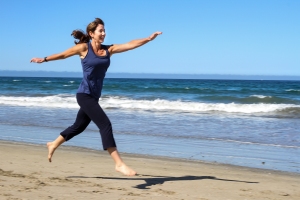Our bodies were meant for movement. You’d never buy a shiny new car, and let it sit in the garage. That would cause damage to the car. It needs to be driven, and at the very least started up from time to time to keep all the moving parts working properly. I don’t know much about cars, so this analogy will end here, but you get the idea. Sitting still leads to chronic diseases. High blood pressure, high triglyceride levels, and type 2 diabetes are no walk in the park. (Sorry for the pun). Did you know that you can reduce the risk of these three lifestyle diseases with brisk walking, just as much as running?
These are called lifestyle diseases because they come as a result of a sedentary lifestyle, often coupled with a poor diet. Lifestyle is defined by habits and attitudes that constitute a mode of living. Said another way, it is the typical way of life for an individual, or simply Life Style. It’s what you do on a regular basis. What’s your style?
Feeling blah? Walking is not only good for your heart health, but it can boost your mood. Physical activity causes the release of certain chemicals in the brain that not only put you in a better mood, but open up your creativity. I often come up with my best ideas while out on a walk or jog. So while you are cutting your risk for heart disease, stroke, and obesity, you can also enjoy the benefits of a happy and creative mindset.
Start slow. The American Heart Association advises us to log 30 minutes a day of moderate activity. At the very least they recommend 150 minutes per week of moderate activity (brisk walking) or 75 minutes per week of vigorous activity (running). If you haven’t engaged in any exercise up until now, then I suggest starting slow. Start with 5-10 minutes at a time. Take a walk around the block on your lunch break. Park far away from where you need to go. Get up from your computer, and take the dog for a stroll. Find ways to start incorporating walks into your daily routine, then gradually work your way up to 30 minutes a day.
Avoid injuries. If you’re walking long distances or just bought new shoes, you may experience blisters. Some people feel strongly opposed to synthetic fibers. Socks made with synthetic fibers such as Coolmax®, acrylic, and polypropylene can decrease blisters compared to cotton socks. The choice is yours. Do what’s right for you.
Avoid shin splints by wearing proper shoes, and increase your distance, pace and incline gradually. If you have knee pain, talk to your doctor or physical therapist, and personal trainer. You may benefit from certain strengthening and/or stretching exercises.
If you do suffer an injury, follow the R.I.C.E. method. Rest the injured area by getting off your feet. Ice the area for 20 minutes at a time. Add compression by using a bandage or wrap to apply pressure and secure the ice. Elevate the injury above your heart to reduce swelling and promote healing.
Walk with a friend. Walking can be fun when teamed up with a buddy. Enjoy the scenery and the conversation. This adds a level of accountability too. You are more likely to stick to it if you’ve got a partner. If you don’t have friends available in your area, consider signing up for my WalknTalk program. I walk with clients individually, or in groups. Venues include parks, beaches, and central coast neighborhoods.
Contact me for a free health consultation.
Laurel Marshall, Health Coach & Personal Trainer
healthcoachlaurel@gmail.com
Source: American Heart Association
